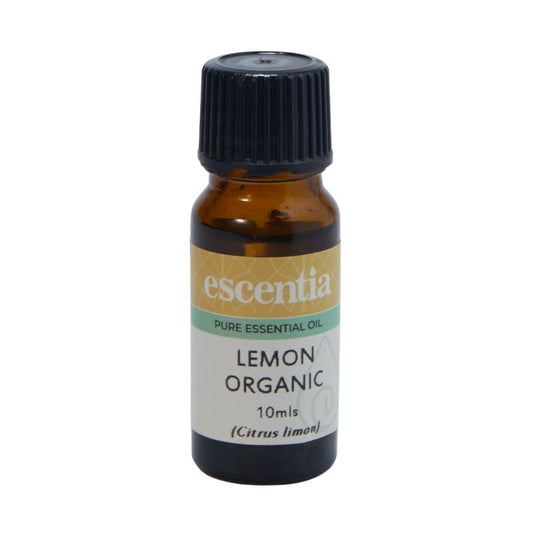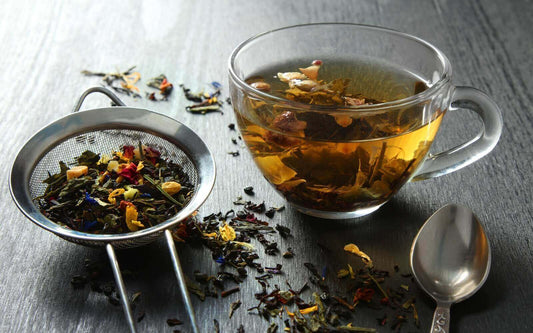
Essential Oils for Balancing Hormones
Essentially NaturalHormone imbalances occur naturally in various stages of life such as puberty, perimenopause and menopause. But they can also affect your everyday life through exposure to toxic chemicals, stress or even medication.
Depression, mood swings, PMS, menstrual problems, skin problems, weight issues, insomnia, lack of temperature control (hot and cold flushes), headaches as well as issues resulting from contraceptives can all be hormonal imbalances manifesting themselves unwelcomely into our lives.
How Do Essential Oils Help With Hormone Imbalances?
The best way to treat hormone imbalance is holistically.
Often pharmaceuticals attack and correct one imbalance but then create a different problem elsewhere in the endocrine system (the body's chemical messenger/home of the hormones). Thankfully, hero Nature has come to the rescue yet again with essential oils, which studies have found are the best holistic way to treat hormone imbalances.
A special group of essential oils, called adaptogens, have opposing properties that adapt to your body's needs. Adaptogen essential oils can, for instance, simultaneously stimulate and relax different bodily functions according to your needs. They are balancers.
Here are the adaptogen essential oils:
- Basil
- Lavender
- Anise
- Liquorice
- Lemon
- Myrtle
- Clary Sage
- Geranium
- Lemongrass
- Thyme
- Sandalwood
Clary Sage the Wonder Oil
Clary Sage is our essential oil wonder for women! High estrogen foods are common and excess estrogen production in the body is a source of many problems for women. Thus clever clary sage can help with a wide array of hormonal ails. It should be your go-to at that time of the month!
How Does Clary Sage Oil Help Hormonally?
- Reduce cortisol (the stress hormone) levels by 36%
- Improve thyroid hormone levels
- Balance estrogen production (helping PMS cramps and is a mood balancer)
- Relieves pain and reduces depression.
Lavender Lovely
Lavender is one of the most popular and well researched essential oils. Simply inhaling lavender for 10 minutes balances emotional feelings, depression and stress.
How Does Lavender Oil Help Hormonally?
- Reduce stress, headaches, depression
- Pain and the discomfort associated with PMS cramps
- Balance hormones
It's Just a Matter of Thyme
Studies have shown Thyme essential to be good for progesterone balance. Thyme essential oil may be a possible alternative to hormone replacement therapy.
How Does Thyme Oil Help Hormonally?
- Progesterone Balance - Low progesterone levels are common in both women and men, and contribute to infertility, polycystic ovary syndrome, depression and other hormone imbalances.
Sandalwood
For men and women, Sandalwood essential oil balances testosterone levels and is a natural aphrodisiac. It is a popular fragrance in men's cologne and for good reason!
How Does Sandalwood Oil Help Hormonally?
- Balances testosterone levels
- Acts as a natural aphrodisiac.
Oils Sharing the Same Aim
Tired Thyroid
If your thyroid hormones are out of balance, symptoms may include insomnia, depression, hot and cold flushes, dry hair and skin, weight gain or loss and fatigue.
Which Oils Help Balance Your Thyroid?
So Very Ovary!
The ovaries produce estrogen and progesterone, and when these are imbalanced, lead to irregular menstrual cycles, sweating and hot flushes, lowered libido, PMS and infertility.
Which Oils Balance Your Ovaries?
- Lemon - Balances estrogen and progesterone levels. Helps manage symptoms like irregular menstrual cycles, hot flashes, and PMS.
- Geranium - Balances estrogen and progesterone levels. Supports the reproductive system and improves skin health. Relieves stress and improves mood.
- Clary Sage - Reduces cortisol levels, helping to manage stress. Balances estrogen production, which can alleviate menstrual problems and mood swings. Relieves pain and PMS cramps. Reduces depression and improves mood.
Best Practices for Taking and Using Essential Oils
Now that you know which oils to use when - let's tackle a vital question that will take you from just knowing which oils to use to implementing the oils effectively in your daily lifestyle. How do I use said oils and how often?
Well, how often is an easy one - Essential Oils Should Be Used Daily to gain the most from their benefits, but how to use them is specific to your intentions.
NOTE:
- If you are applying an essential oil to your skin to dilute the essential oil with a carrier oil.
- Before a complete application of an oil to try a patch test (to find out about your personal reactivity).
- Consult a healthcare professional before using essential oils if you are pregnant, breastfeeding, have a medical condition, or are taking medications
How to Use Essential Oils for Maximum Benefits:
Inhalation:
Direct Inhalation: Place a few drops of essential oil on a tissue or cotton ball and inhale deeply. This method is useful for quick relief from stress or headaches.
Diffusion: Use an essential oil diffuser to disperse the oils into the air, creating a relaxing or invigorating atmosphere. This is ideal for mood enhancement or sleep support.
Steam Inhalation: Add a few drops of essential oil to a bowl of hot water, cover your head with a towel, and inhale the steam. This is great for respiratory support.
Benefits:- Immediate Effect on Mood and Stress: Inhalation allows essential oils to quickly enter the bloodstream through the lungs and directly affect the limbic system, which is responsible for emotions, mood, and memory. This can provide immediate relief from stress, anxiety, or depression.
- Respiratory Support: Breathing in certain oils, like eucalyptus or peppermint, can help clear the airways, making it easier to breathe and relieving symptoms of colds, allergies, or sinus congestion.
- Safe and Gentle: Inhalation is generally a safe and gentle way to use essential oils, especially for those with sensitive skin or those who are new to essential oils.
- Convenient and Portable: Aromatherapy can be easily done anywhere, making it a convenient option for quick stress relief or mood enhancement throughout the day.
When to Use Inhalation:
- For Mood Enhancement
- For Respiratory Relief
- For Focus and Concentration.
- For Sleep Aid
Topical Application:
Massage: Mix a few drops of essential oil with a carrier oil (such as coconut, jojoba, or almond oil) and massage into the skin. This method is beneficial for localized pain relief, muscle relaxation, or skin care.
Benefits:
- Targeted Application: Direct application can focus the benefits on a specific area of the body.
- Quick Absorption: Oils are absorbed through the skin, providing quicker relief for localized issues such as muscle tension, pain, or skin conditions.
- Reflexology Points: Applying oils to specific areas (like the base of the throat for thyroid issues or feet for hormonal balance) can target particular systems in the body through reflexology.
- Continuous Release: Oils on the skin can provide a slower, continuous release of their beneficial properties.
When to Rub In:
- When dealing with localized pain or cramps.
- When targeting specific reflexology points for hormonal or glandular issues.
- When seeking quick relief from stress, headaches, or muscle tension.
















